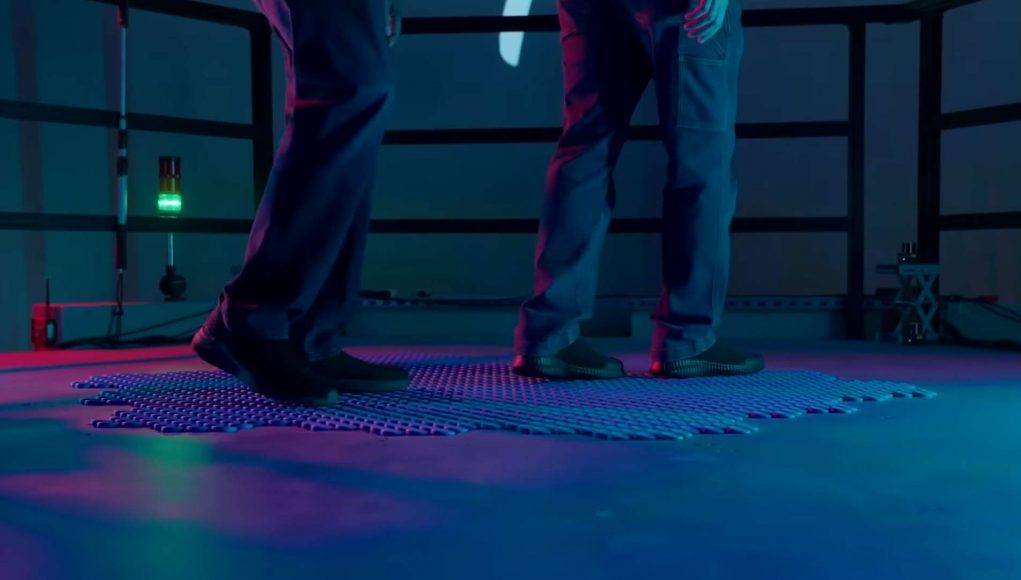Disney unveiled an omni-directional treadmill project it hopes to eventually scale up for users both in and outside of virtual reality.
Called HoloTile, the unique device is composed of individual ’tiles’ that rotate and change pitch to accommodate to a user’s stride in order to simulate walking in any given direction.
Disney is billing it as “the world’s first multi-person, omni-directional, modular, expandable, treadmill floor,” saying in a recent blog post that HoloTile is capable of letting any number of people have a shared VR experience, walk an unlimited distance in any direction, and never collide or walk off its surface.
HoloTile is currently a project of Lanny Smoot, a Disney Research Fellow and longtime member of Walt Disney Imagineering Research & Development. Smoot showcases a prototype version of the moving floor in a new video, which also highlights some of his 25 years of contributions to the company as an inventor.
In the video, we get a look at a user wearing a Quest Pro headset and walking alone, two people walking in different directions, and objects being effortlessly shuffled around the floor. You can catch that video, time-stamped to the HoloTile bit, below:
In addition to its use for VR users, Smoot says HoloTile could also be used as an insert in a theatrical stage, which he says will allow “performers to move and dance in new ways, or stage props and structures to move around or appear to set themselves up.”
Of course, HoloTile isn’t the first omni-directional treadmill; there have been a number of different styles of motorized, floor-style treadmills in the past, however they’ve generally proven too expensive and complex for anything but closed-door applications—that’s in addition to being generally ineffective at perfectly replicating normal walking, as you’ll see most demonstrators taking stilted half-steps instead of standard, more natural strides.
We’re looking forward to seeing HoloTile scaled up, and tuned in a way that allows users more fluid and natural movement. You can bet if Disney can do it, HoloTile will be heavily featured at the company’s theme parks.







